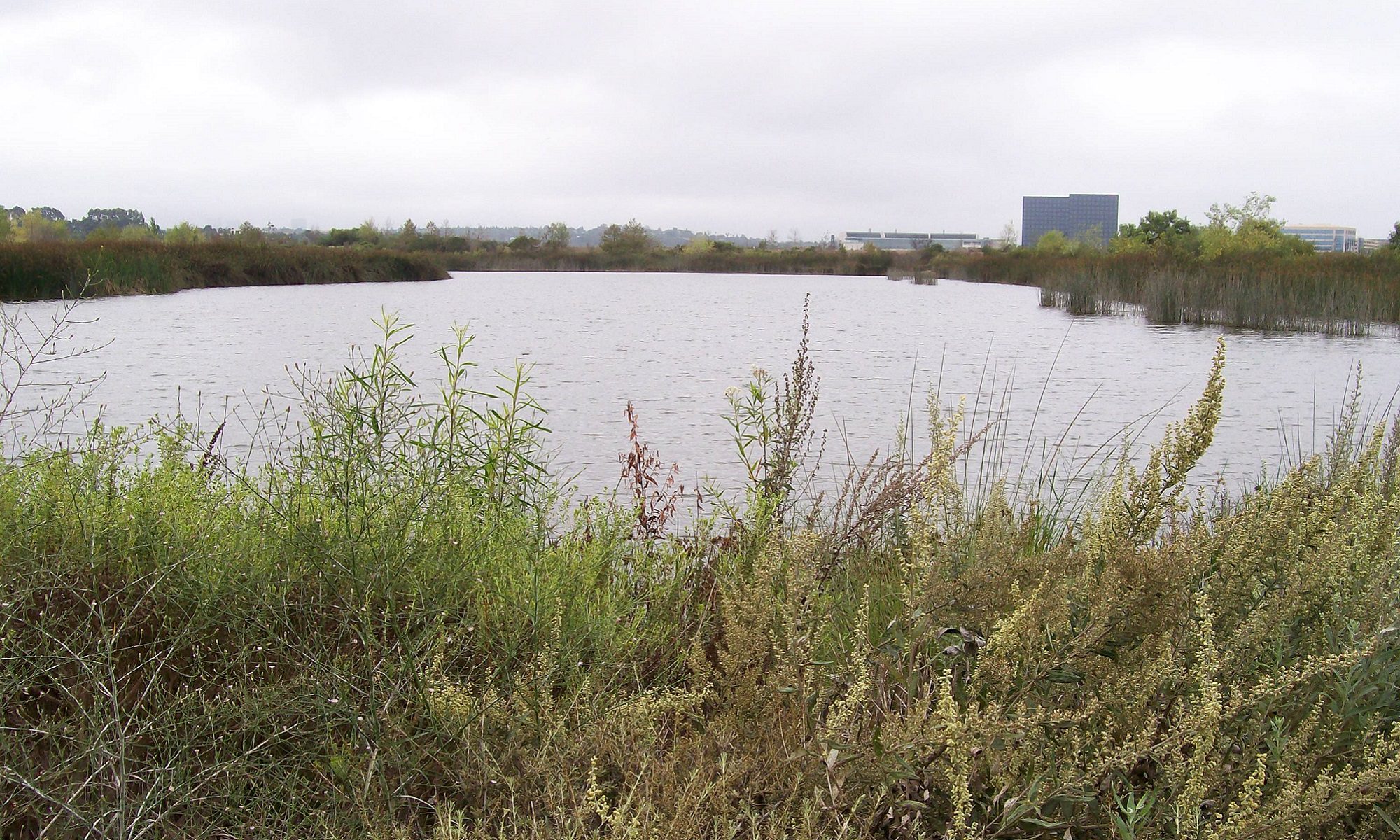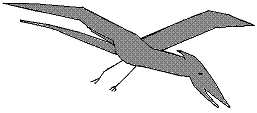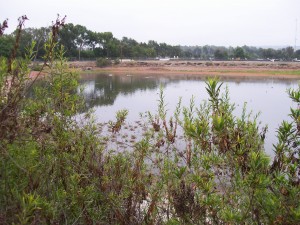By living-pterosaur investigator Jonathan Whitcomb
I’ve learned some things, over the past fifteen years, about how people happen to see featherless flying creatures that appear to be living pterosaurs. It’s almost always while one or more eyewitnesses are outside. For Americans, that can mean driving.
Car Accidents Related to Pterosaur Sightings
The other day, I was doing an online search and found the following report (which I’ve condensed and slightly edited for clear English):
“In 2010 I saw a flying dinosaur. I was driving a car alone, on my way to pick up my sister. Anyway, I’m driving behind a man who is driving a mini-van . . . I see the man looking out of his window which made me look up. . . . and there was a huge flying bird-like animal above us. I looked back at the road and witnessed the man swerve off the road and flip his van into [a field next to the road]. I know he was afraid of what he saw, just like I was. I was stunned from the entire experience . . .
“This was not one of those [larger birds that may live around the area]. It was huge and the only thing I can compare it to is a dinosaur. . . . It was in upstate New York and no one believes me.” [Comment made, around February of 2017, on an online post: “Dinosaur Sightings: Are Dinosaurs Still Alive Today in Africa?”]
Other “Pterodactyl” Encounters While Driving
One of the best known living-pterosaur (LP) sightings by a car driver was in South Carolina. Susan Wooten was following her friend, who was driving ahead on a major country highway, when the huge flying creature passed right in front of her car.
Early in 2013, a musician reported a close encounter with a “pterodactyl” that flew in front of his car while he was driving on a highway in Raleigh, North Carolina, at sundown. Unlike many sightings, this was was not reported to me (Jonathan Whitcomb) but to fellow members of a musicians’ forum. In addition, the flying creature was only seven or eight feet off the ground.
Even more shocking was the ropen sighting near the University of California at Irvine, in 2007, for that modern pterosaur was gigantic: 30 feet long. The man who was driving has had to be anonymous because of his professional position (either a medical doctor, attorney, or police officer—I will not even reveal which of those three it is).
A pond in the wildlife sanctuary near the sighting area (2007)
###
.
Many Living Pterosaur Sightings in the United States
A great number of the encounters with “pterodactyls” have been in these states:
- California
- Georgia
- Texas
- North Carolina
- Virginia
- Hawaii
- Ohio
- Utah
.
¿Alguna vez viste un pterosaurio? Muchas personas han visto estas criaturas voladoras. (Por Jonathan Whitcomb, un experto en pterosaurios vivos)
.
Pterosaur sighting while driving in Raleigh, North Carolina
I was driving along on I-540 in Raleigh at sundown tonight . . . All of a sudden I see the HUGE bird looking thing fly across the overpass I was on, maybe 20-25 feet in front of my car . . .
.
The Bible and Modern Pterosaurs
The primary foundation for belief in scriptures, and belief in the literal ark of Noah, is in faith. That does not mean blind faith, believing without any reason to believe, but it can mean taking one or two steps onto the path ahead, even when the light does not yet quite reach that far.
.
Living pterosaurs or misidentified birds?
I know of three cases in which a person has seen a frigatebird [a large bird of tropical areas], or a photo or video of that kind of oceanic bird, and thought it was a living pterosaur (or at least he put forward the idea that it was a non-extinct pterosaur). Take that in context: Over the past thirteen years, I’ve looked at hundreds of eyewitness sighting reports of possible living pterosaurs. [The many credible reports of apparent pterosaurs are not misidentified birds but actual pterosaurs, in at least the great majority of cases.]
.
Books for LDS readers (living pterosaurs)
Rather than begin by listing my four cryptozoology books, let’s look at what you would like as a reader or at the needs and interests of the reader for which you would give a book as a gift.
.
Pterosaur sighting while driving
The sighting by Wooten was at about 3:00 p.m. between Greenville and Florence, South Carolina. The visibility was clear. She was following a friend who was driving in a car ahead (the second woman did not notice anything, for the apparent pterosaur had flown behind that second car).
.
Pterosaur sighting in California
Ten years ago this summer (2007), the young cryptozoologist Scott T. Norman had a sighting of an apparent Pteranodon in Central California. I will not allow his encounter to evaporate from the memory of cryptozoology enthusiasts.




